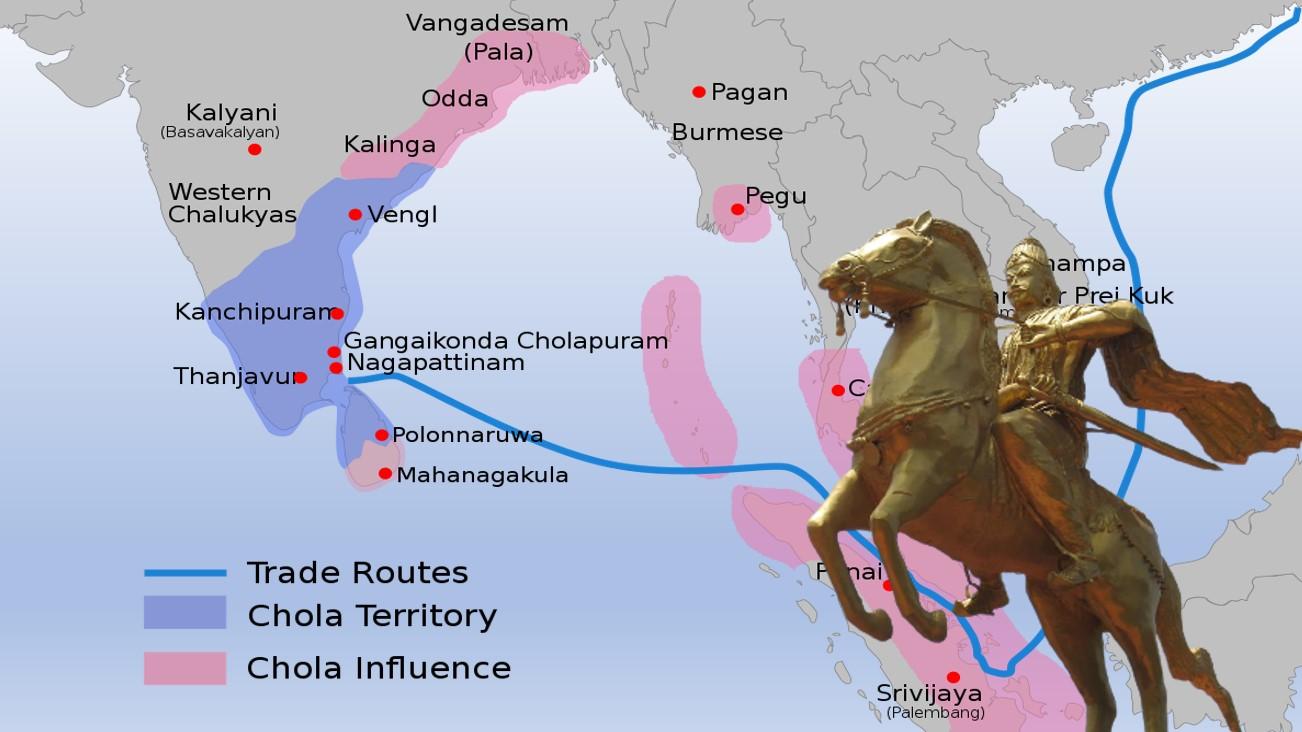The Chola Dynasty: An Overview for UPSC IAS Exam
The Chola Dynasty: An Overview for UPSC IAS Exam
The Chola Dynasty, originating from the fertile valley of the Kaveri River, was one of the most significant and longest-ruling dynasties in the history of southern India. Its influence spanned not just across the Indian subcontinent but also reached the shores of Southeast Asia. The dynasty is celebrated for its contributions to art, architecture, literature, and its formidable naval prowess.
Founding and Expansion
The Chola Empire was founded by Vijayalaya Chola in the 9th century, marking the beginning of the medieval Cholas. Vijayalaya, initially a feudatory of the Pallavas, capitalized on the decline of his overlords to establish his dominion. His successors, notably Aditya I and Parantaka I, expanded the empire through military conquests against the Pallavas, Pandyas, and the Sri Lankan kingdoms.
Golden Age under Rajaraja I and Rajendra I
The zenith of Chola power was reached under Rajaraja I (985-1014 CE) and his son Rajendra I (1014-1044 CE). Rajaraja I extended the empire to Sri Lanka and parts of the Maldives, while Rajendra I’s successful campaigns in North India, and against the kingdoms of Southeast Asia, notably the Srivijaya Empire, underscored the Chola’s naval dominance. Rajendra I’s Gangaikonda Cholapuram and the Brihadeeswarar Temple at Thanjavur, both UNESCO World Heritage Sites, stand as testaments to the architectural and cultural achievements of this period.
Administration and Governance
The Chola administration was highly organized and efficient, with a well-structured bureaucracy. The empire was divided into provinces (Mandalams), which were further subdivided into districts (Nadus) and villages (Kurrams). The central government was headed by the king, supported by a council of ministers and a network of officials who oversaw various aspects of governance, including revenue collection, judiciary, and military affairs.The Chola rulers implemented a sophisticated system of revenue collection and land survey, which facilitated agricultural expansion and economic prosperity. The Uttaramerur inscriptions provide detailed insights into the local governance and democratic practices in village assemblies (Sabhas) during the Chola period.
Military and Naval Power
The Chola military was a formidable force, comprising infantry, cavalry, and a significant elephant corps. The Cholas are particularly noted for their naval strength, which allowed them to control the trade routes in the Bay of Bengal and to undertake overseas expeditions. The naval campaigns against the kingdoms of Southeast Asia are a highlight of their military achievements.
Cultural Contributions
The Cholas made lasting contributions to Indian art and architecture, with the construction of grand temples that showcased the Dravidian style of architecture. The Brihadeeswarar Temple at Thanjavur, with its magnificent vimana (tower), epitomizes Chola architectural prowess. The Chola bronzes, especially the iconic Nataraja sculptures, are celebrated for their beauty and craftsmanship.The Chola period also saw significant developments in Tamil literature, with the composition of seminal works that enriched the Tamil cultural heritage.
Decline and Legacy
The Chola Empire began to decline in the 12th century due to internal strife, succession disputes, and the rise of rival powers like the Pandyas and the Hoysalas. The last Chola ruler, Rajendra Chola III, was defeated by the Pandya king in the late 13th century, marking the end of the Chola dynasty.Despite their decline, the Cholas left a lasting legacy on the Indian subcontinent and Southeast Asia. Their achievements in governance, military strategy, art, and architecture continue to be celebrated as a golden age in Indian history.
Conclusion
The Chola Dynasty’s contributions to Indian civilization are immense, spanning the realms of governance, military strategy, art, and architecture. Their legacy, immortalized in stone and bronze, continues to inspire admiration and study. For UPSC IAS aspirants, understanding the Chola Dynasty’s history offers insights into the complexities of ancient Indian polity, culture, and international relations.







